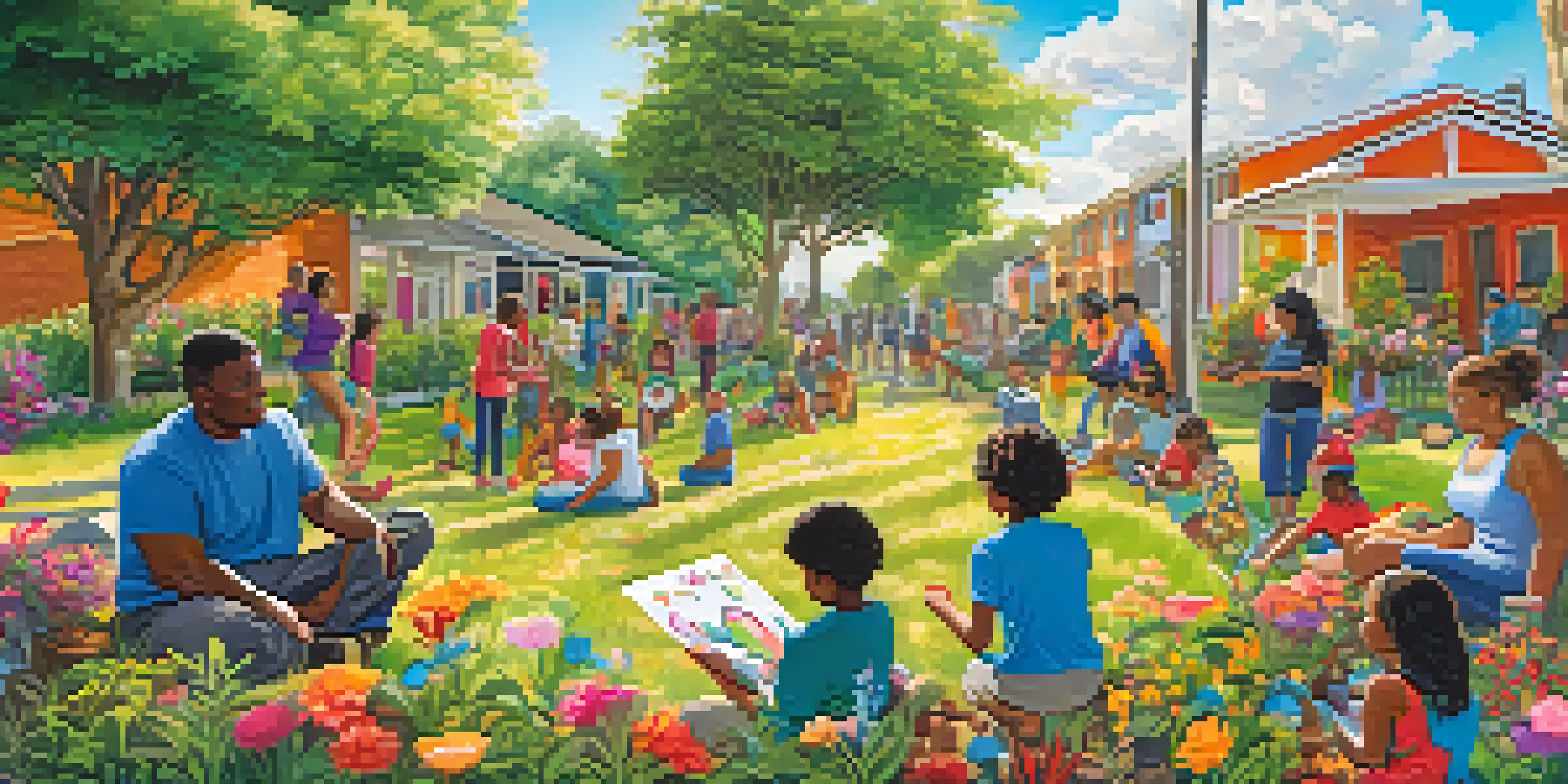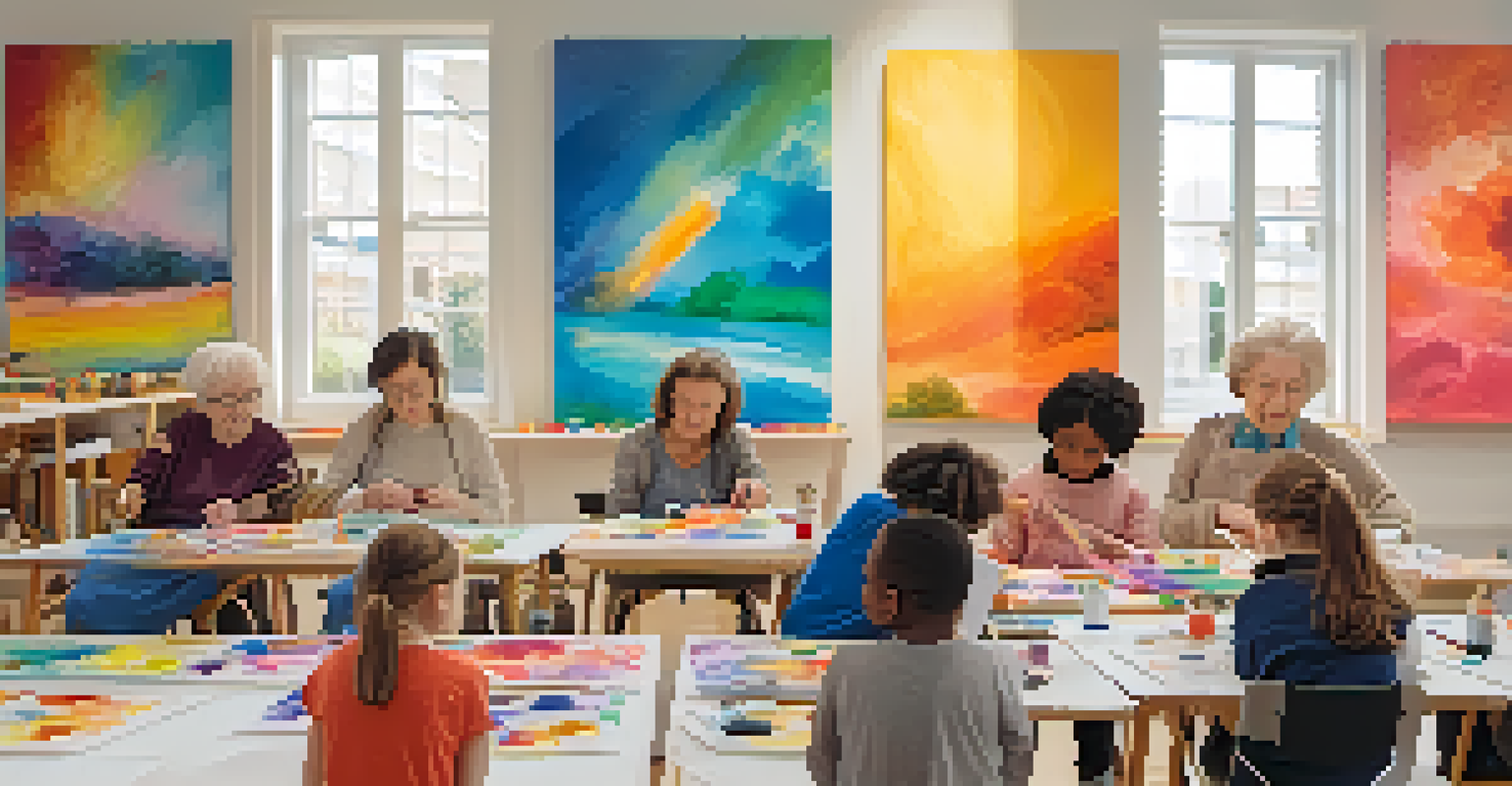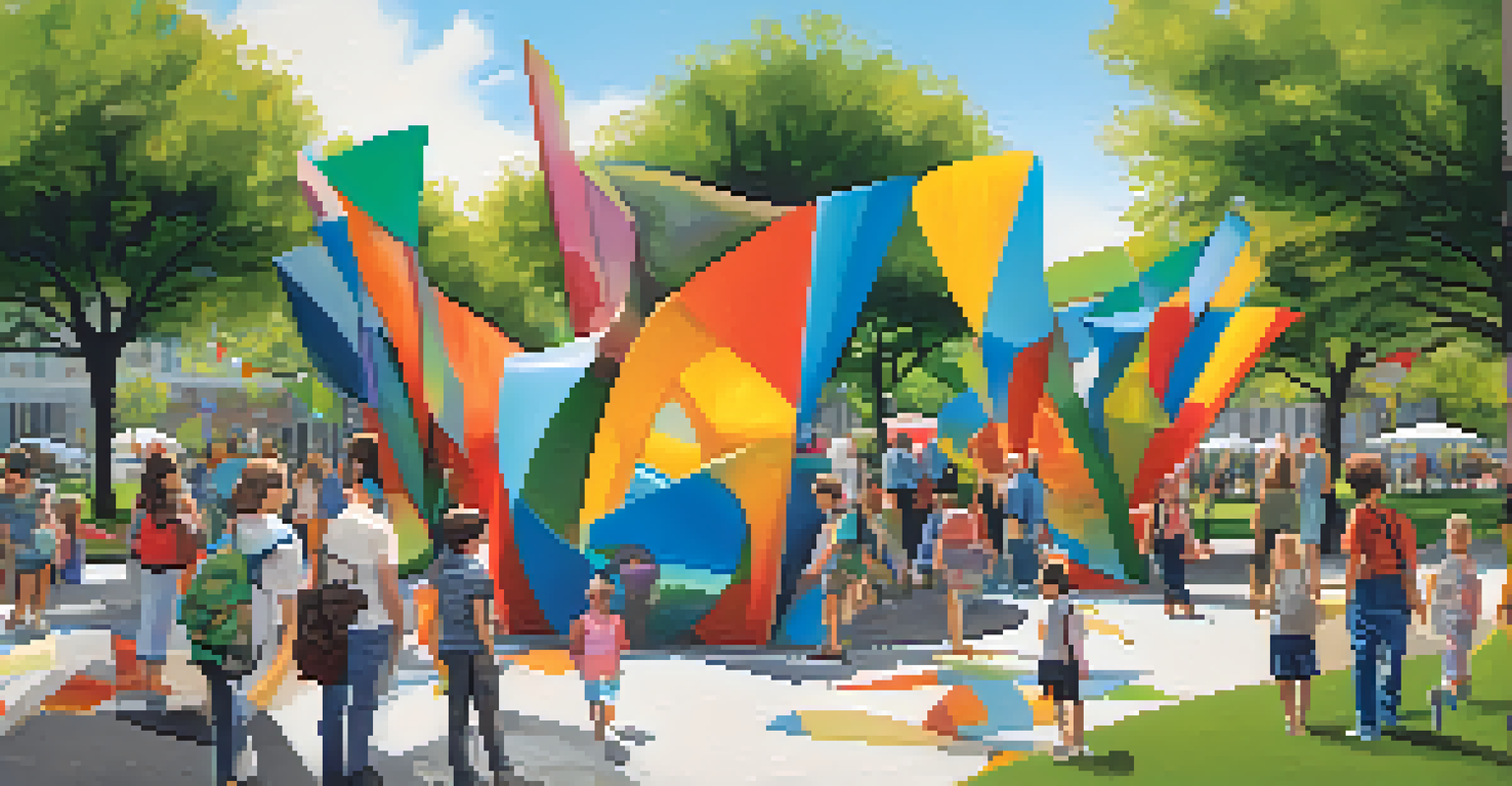The Role of Art in Community Building and Social Cohesion

Art as a Catalyst for Community Engagement
Art has an incredible ability to draw people together, creating a shared space where individuals can connect. Whether it's a mural on a community wall or an outdoor concert, art invites participation and interaction. These events foster conversations among diverse groups, breaking down barriers and encouraging collaboration.
Art is the most beautiful of all lies; it is a lie that tells the truth about the world.
When community members engage in artistic projects, they often feel a sense of ownership and pride in their environment. This connection can lead to increased civic engagement and a commitment to improving local spaces. By working together on creative endeavors, residents build relationships that extend beyond the art itself.
Furthermore, art can serve as a platform for addressing social issues, allowing communities to express their experiences and aspirations. Through performance, visual arts, or public installations, communities can highlight their unique narratives and foster empathy among residents.
Artistic Expression and Cultural Identity
Art is a powerful medium for expressing cultural identity, allowing communities to celebrate their heritage. Through festivals, traditional crafts, or music, people can share their stories and traditions, fostering a sense of belonging. This celebration of culture helps to affirm individual and group identities.

When communities embrace their cultural expressions, they create a tapestry of diversity that enriches the social fabric. This diversity can enhance community pride and resilience, leading to greater social cohesion. Understanding and appreciating different backgrounds through art can also bridge gaps between generations.
Moreover, cultural art initiatives can provide opportunities for education and dialogue, promoting inclusivity and understanding. By engaging with various cultural practices, community members can gain insights into each other's perspectives, ultimately fostering harmony.
Public Art Projects and Community Development
Public art projects play a significant role in community development by transforming shared spaces. Murals, sculptures, and installations can revitalize neglected areas, making them more inviting and accessible. This transformation often attracts visitors, boosting local economies and encouraging further investment.
The purpose of art is not a rarified, intellectual distillate; it is a lowly, decentered form of community, a way of being together.
Additionally, these projects can become focal points for community gatherings and events. By creating a sense of place, public art encourages residents to come together, fostering social interaction and collaboration. It can turn a simple park into a hub of creativity and connection.
The involvement of local artists in these projects also nurtures talent within the community. By showcasing their work publicly, emerging artists gain visibility and recognition, which can lead to more opportunities for collaboration and growth.
Art Education as a Tool for Empowerment
Art education programs can empower individuals and communities by providing essential skills and knowledge. These programs often focus on creativity, critical thinking, and communication, equipping participants with tools to express themselves effectively. This empowerment can lead to increased confidence and self-esteem.
Moreover, art education encourages collaboration among participants, fostering teamwork and social skills. By working together on projects, individuals learn to value different perspectives, an essential aspect of community cohesion. This collective learning experience can create lasting bonds among participants.
Investing in art education also contributes to the overall well-being of communities. Through creative expression, individuals can process their emotions, leading to improved mental health and social interactions. This holistic approach enhances the community's quality of life.
The Role of Art in Bridging Generational Gaps
Art has a unique ability to bridge generational gaps, bringing together people of all ages. Shared artistic experiences, such as community theater or intergenerational art workshops, encourage dialogue between younger and older generations. This interaction fosters mutual respect and understanding.
By collaborating on art projects, different age groups can share their knowledge and experiences, creating a rich learning environment. Younger individuals may bring fresh ideas, while older participants contribute wisdom and tradition, enriching the creative process. This exchange strengthens community ties.
Additionally, art can serve as a common language, transcending verbal communication barriers. Through visual arts, music, and dance, generations can connect on a deeper level, building relationships that foster social cohesion.
Art and Mental Health: Building Resilient Communities
Engaging with art can significantly enhance mental health and well-being in communities. Participating in creative activities allows individuals to express their feelings and experiences, promoting emotional healing. This communal focus on mental wellness leads to stronger, more resilient communities.
Art initiatives can provide safe spaces for individuals to share their struggles and support each other. Group art therapy sessions, for instance, foster connection and understanding among participants, reducing feelings of isolation. These supportive environments are vital for community cohesiveness.
Furthermore, by raising awareness of mental health issues through art, communities can destigmatize these conversations. Public art installations or performances focused on mental health can spark discussions, encouraging openness and empathy, which are essential for building strong social networks.
The Future of Art in Community Building
As communities continue to evolve, the role of art in fostering connection and cohesion remains vital. With the rise of digital platforms, artists are finding new ways to engage audiences and create shared experiences, even from a distance. This adaptability ensures that art remains relevant in community building efforts.
Innovative approaches, such as virtual art exhibitions or interactive online workshops, can reach wider audiences, breaking geographical barriers. These platforms allow communities to share their artistic journeys and collaborate, creating a global sense of community.

Looking ahead, integrating art into urban planning and community initiatives will be crucial. By prioritizing artistic expression in public spaces, communities can enhance their social landscape, ensuring that art continues to play a significant role in connecting individuals and fostering harmony.